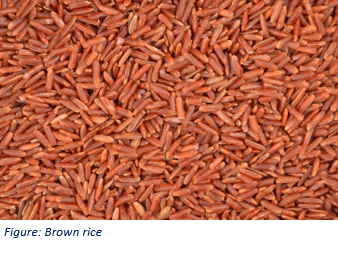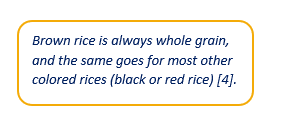RICE (Oryza sativa)
Rice is worldwide second in production to corn but first in its contribution to human food. It can grow anywhere - from flatlands to steep mountainsides, it only requires a lot of water. When rice is harvested its inedible hull is removed, which results in a whole grain rice kernel, ready to eat. Whole grain rice is usually brown, but in fact can be in many different colors - it can also be black, red, or purple, it depends on the variety of rice. If the rice is milled further and the bran and germ are also removed, we get white rice, which has a lower level of nutrients.

Brown rice has less of fiber than most whole grains but is rich in many other nutrients and has also higher levels of many vitamins and minerals than white rice, which is refined grain. Other colored rices (red, purple, black) have similar nutrient levels but are not as well studied as brown rice. Brown rice is a great source of selenium and manganese [1]. It also represents a good source of magnesium, phosphorus, thiamine (vitamin B1), niacin (vitamin B3), vitamin B6 . Rice is also suitable for gluten-intolerant people because it doesn’t contain gluten [3].
HOW TO BE CERTAIN YOU'RE GETTING WHOLE GRAIN RICE?

References:
1. Oldways Whole Grains Coucil. Rice and wild rice september grains of the month.
2. Wikipedia. Brown rice.
3. Oldways whole grains council.
4. Oldways whole grains council. Whole grains A to Z